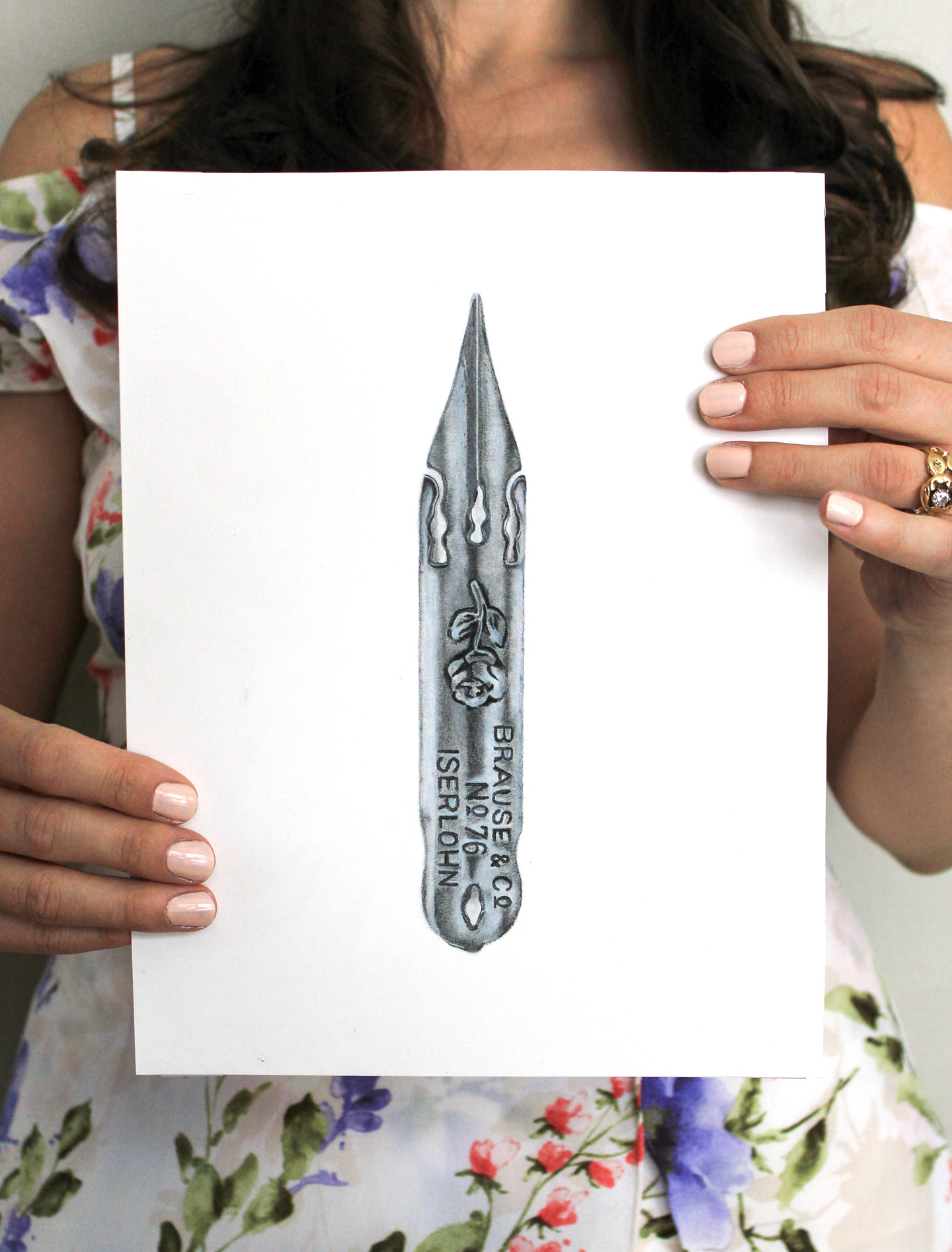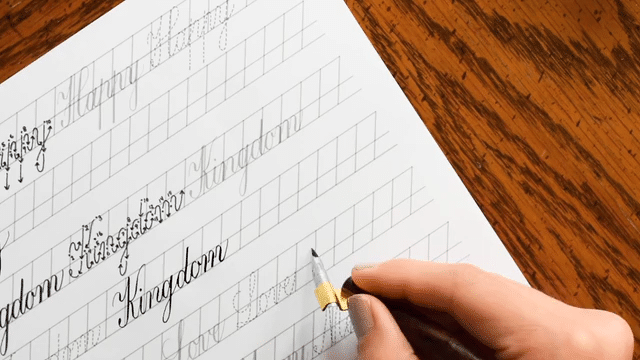
If you’ve conducted a Google search on how to learn certain skills from knitting to drawing to woodworking, you’ve probably heard of Craftsy. Craftsy is a vibrant online community dedicated to the facilitation of learning how to create beautiful things. I am so very pleased to announce that TPK has teamed up with Craftsy to offer a series of sponsored posts throughout the next couple of months. The reason I am happy about this is the benefit it offers you as the reader/learner; each blog post has the potential to further your artistic growth either through information or through a giveaway {who wants to win a $230 watercolor set in November?!}.
Today, Craftsy has been kind enough to provide me with a free downloadable guide to perspective drawing to share with you.

Remember when I showed you how to draw the cityscape above? I would have loved to have this guide then; because it delves deeply into the whys and hows of perspective. The guide is a comprehensive perspective drawing tutorial written by Paul Heaston, who is a very talented sketch artist. One look through his website {link included in the guide}, and you realize what an expert he is in realistically representing the places he’s been — and even the people there!

I can relate to Paul’s sketches because I have been drawing my surroundings since I gained an understanding of how to create perspective. I learned perspective drawing in exactly the same way Paul explains it — the backbone is a horizon line, the next most important things are vanishing points. Until you understand this concept, you won’t be able to draw with correct perspective.
So: why is a mastery of perspective drawing important? For me, it boils down to recording my surroundings and state of mind. As humans, our surroundings are so important to us. Surroundings are behind our motivation to do a lot of things: travel {so we can experience more surroundings}, remodel our homes {so we can experience better surroundings}, and surroundings/ambiance can even influence where we go out to eat!

When I was sixteen years old, I sketched this ink and watercolor wash of my Denver-dwelling grandparents’ kitchen on a piece of computer paper. At the time, I was very proud because I had driven from rural Kansas to “the big city” all by myself to visit them! Staying at their house was always a bit of an exotic experience for me; it seemed so cosmopolitan. Every time I look at the drawing above, I am able to conjure up the excitement of the Denver visits of my youth. It puts me exactly where I was that day: sitting at a painted table gazing through the kitchen to the dining room, bottles of olive oil to my left, kitchen cabinets straight ahead. Without perspective drawing, the magic of this scene would be lost.
But why not just take a photo? Well, this is a photo I took this morning of our apartment’s living room. It’s cold and factual, and it’s going to get lost among the droves of other photos on my computer hard drive.

Paul’s guide inspired me to create a watercolor wash sketch of our living room. Maybe I’m just nostalgic, but I know that I will really appreciate having this sketch in a few years.

This quick sketch divulges a lot more about the room. It shows you that I see the room as simple and tidy, bare yet harmonious. It also shows you exactly where I am sitting in reference to the room. Essentially: it’s a captured memory rather than a moment in time.
Drawing this room required almost all the components of Pau’s How to Draw with Perspective. I used three-point perspective, divided space in perspective, and ellipses in perspective. It sounds complicated, but it’s not, really. With a little information on the subject, it’s easy to understand how angles affect our perception. What Paul does in his guide is teach you how to really see your surroundings and analyze angles in order to accurately draw either an imaginary place or a real one.

My goal today is to expound on Paul’s teachings to show you how I sketched our living room “in real life”. Someday, I’m sure I’ll miss living here, and this very drawing will bring me back to what it was like to be 26 and living in an apartment in Boulder.
First, I started with the walls, which jut out at angles affected by the horizon line {from my vantage point}, and vanishing points. {Note that these terms and concepts are explained in Paul’s writings.}

I used a little bit of a “hack” — utilizing my pencil to appraise the relationship between the back wall and hallway wall. As you can see, I’m holding it straight here in order to ascertain where the hall wall ends.

Paul’s explanation of how to draw ellipses helped with the couch, since it’s not a completely geometric element.

And his one-point perspective tutorial was very useful in drawing the picture frame at the correct angle.

I continued to quickly sketch in pencil until I ended up with this:

I love the simplistic look of a watercolor wash over India ink, so I used India ink to trace over my lines.

Since this is a fun sketch, I’m not concerned about rigidly straight lines; and some of them are a little wobbly. I think the style underlines how this is an instant recorded in time.

India ink takes a very short amount of time to dry. I wandered off to have a protein shake, and when I got back, I was able to erase with no smear incidents. Micron pens also boast this short drying time; but wait to erase if you are using gel pens or ballpoint pens.

{All erased!}

Another aspect of drawing with Micron pens or India ink I like is the ability to nearly immediately go over your artwork with watercolor. No smudging here!


I have opted to use very neutral, earthy tones for this piece.

The whole sketch took about 45 minutes. Not bad for having a lifelong memory!

I know that you are super creative and can harness the power of perspective drawing to make some really neat stuff. Where you are using perspective because you’re bored in college calculus …

{Yes, my classmate was asleep … let’s just say the class wasn’t riveting.
A high schooler sitting on her bed and doodling …

Or a designer making a watercolor save the date map for a client …

A knowledge of perspective drawing will most assuredly come in handy. Thanks again, so much, to both Craftsy and Paul Heaston, for making such a wonderful guide available to us. Pau’s writings succinctly explain what it took me two years of art classes to learn; it couldn’t come more highly recommended from me! Download it for free here.
Enjoy your weekend; and try drawing something with perspective! I’d love to see your masterpiece on Instagram {@thepostmansknock}, Facebook, or Twitter {@PKPostmansKnock}.



























